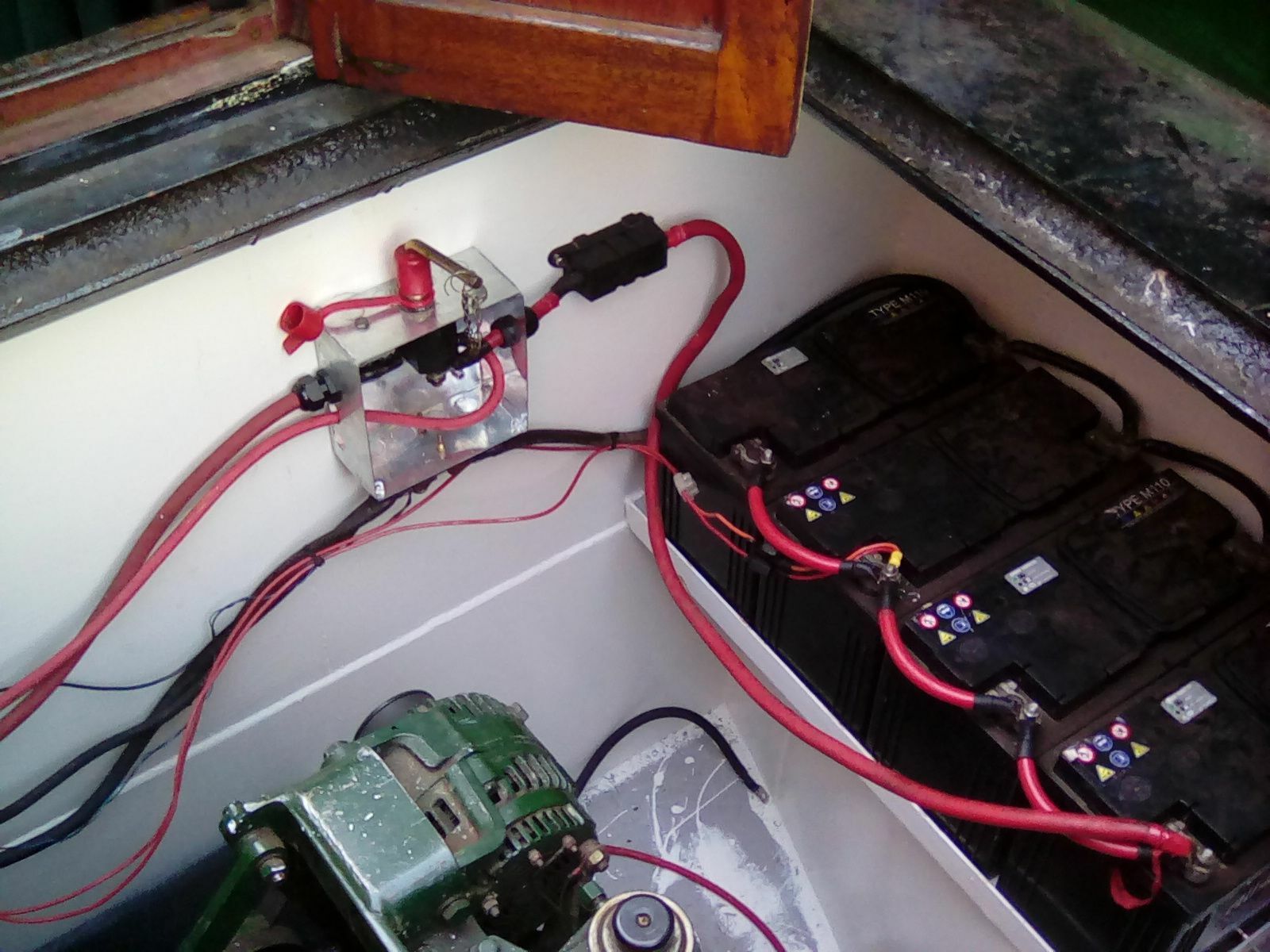-
Posts
7,784 -
Joined
-
Last visited
-
Days Won
50
Content Type
Profiles
Forums
Events
Gallery
Blogs
Store
Everything posted by Jen-in-Wellies
-
This post cannot be displayed because it is in a forum which requires at least 10 posts to view.
-
This post cannot be displayed because it is in a forum which requires at least 10 posts to view.
-
This post cannot be displayed because it is in a forum which requires at least 10 posts to view.
-
See the pinned Battery Charging Primer thread, near the top of Boat Building & Maintenance for more on this and how no-load voltage relates to state of charge. Battery monitor state of charge indicators are the work of the devil and have deceived many new boaters, including me! My theory is that they are sponsored by battery manufacturers to increase sales as people wreck their batteries believing what the % charged gauge is telling them. 😃
-
Welcome to the forum. A couple of questions for you. What sort of battery monitor do you have? Make/model? How does it tell you the batteries are fully charged? Tail current, or a charge % indication? Jen
-

Navigation Closure Notice. Suez Canal
Jen-in-Wellies replied to Jennifer McM's topic in General Boating
The picture that @IanM posted suggests that it has reding, not blacking. More to the point, will the owners pay the boat yard to touch up the reding, or will they do it themselves, considering they will be wanting to save some cash with it having missed so much revenue over the last four months? Will they be allowed to live on board while it is out of the water? Is it worthwhile coating the baseplate, or will it just get scraped off by the bed of the next shallow canal they use? -

Navigation Closure Notice. Suez Canal
Jen-in-Wellies replied to Jennifer McM's topic in General Boating
How long is it going to take to overplate it? -
I've considered various cable pull locks, things like car boot and bonnet catches, that could be opened from inside the cabin and the boards locked again just by dropping them in to position. Could be acquired from a car scrap yard. Not done it though. One thing to keep in mind is if the battery isolation switch needs accessing in a hurry, say if the electrics in the cabin start smoking. Same goes for the fuel isolation valve. Similar to why it is a bad idea to padlock a gas locker. Anything stored in the engine hole needs to be well secured so it can't move with vibration and fall on to the engine, or batteries. Jen
-
On this day in 2012. Approaching Torksey railway viaduct on the tidal Trent. Slow going here as it was just before the tide turned. Traffic on the tidal Trent. Coming in to Gainsborough. Gainsborough Bridge. A fast current with a lot of fresh that day. Gate Burton Chateau Keadby. Not sure if this ship is empty, or aground. The turn in to Keadby lock is tricky when there is a strong tidal flow and especially with a ship moored alongside. I didn't make it without thumping the side either that day. The swing bridge by Keadby lock opens. Four boats, two wide, two narrow were let through in one go. Moored up at Keadby. The cat enjoys the warm board over the engine.
-

Tidy up/improve my electrics
Jen-in-Wellies replied to robtheplod's topic in Boat Building & Maintenance
I don't see why not. Suppose a disintegrating drive belt could cause some damage, but if you replace the belts before they look too tatty, the risk is very low. I moved the house battery isolation switch, current sensing shunt and megafuse to a similar spot. Jen -

Immersion heater switch - neon not lighting up
Jen-in-Wellies replied to Machpoint005's topic in Boat Equipment
The lunar material changes in different parts of the moon. More samples improves our understanding. To quote an astronaut, "It's like no cheese I've ever tasted Gromit". -
Canal and River Trust Press Release We are proud to announce the installation of a new diving platform for kingfishers at Widemead Lock. This is part of our commitment to the wellbeing of all waterways users*. * Except boaters.
-
Notice to Boaters. Swing the bridge clear of the lock chamber before entering
-

Immersion heater switch - neon not lighting up
Jen-in-Wellies replied to Machpoint005's topic in Boat Equipment
Man (and dog) definitely went to the moon in 1989. Though some weird conspiracy nuts claim it was all faked in a studio in Bristol. -
Is it double skinned? No suggestions, but a double skinned chimney would keep the temperature lower and increase the paint possibilities. Or keep it unpainted. Stainless steel without paint has been used before. By Kevin Abato, www.grenexmedia.com - Own work, CC BY-SA 3.0, https://commons.wikimedia.org/w/index.php?curid=2447462 By Steve Jurvetson - https://www.flickr.com/photos/jurvetson/51160383711/, CC BY 2.0, https://commons.wikimedia.org/w/index.php?curid=104990149
-
How was the leak traced to the o-ring on the gear selector? Was it actually seen weeping from this point, or was it just assumed to be from there? Is it certain the current leak is coming from the same point and not just assumed to be. I am wary of any sort of oil additive that is supposed to magically make a mechanical thing better. Usually sold as a resort to someone with a banger that is one step from the scrap yard in an effort to keep it going and a proper repair can't be afforded.









